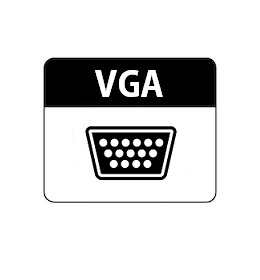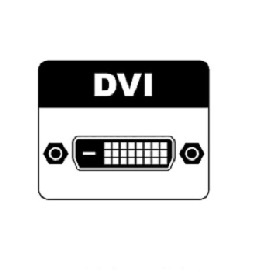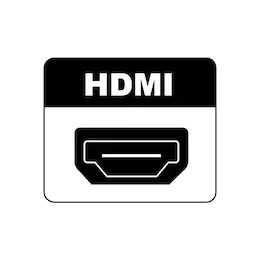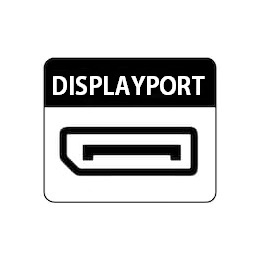
Xenarc Technologies offers the best in industry truly rugged LCD Monitor and Touch Screen Display solutions that are designed and built to last. We have solutions meeting mission critical requirements such as water and dust environmental protection, water resistant for disinfection, high brightness sunlight readability, shock / vibration / impact resistant, and extreme cold and hot operating temperatures. Before picking the right ruggedized Industrial Monitor or Industrial Touchscreen for your application, let's understand the different types of Display Interfaces.
Here's a quick summary of the Video Input Connector Types:
- HDMI: Audio and video signal, best for TV to PC connections.
- DVI: Video only, perfect for older systems or for 144Hz at 1080p.
- DisplayPort (DP): The best connector for an audio and video signal, and can transmit 144Hz up to 4K.
- VGA: Old, legacy video connector. Only to be used when nothing else available.
- USB-C: Formally known as USB Type-C. Connects to both hosts and devices, replacing various electrical connectors including USB-B and USB-A, HDMI, DisplayPort and 3.5mm audio cables and connectors.
- Thunderbolt: A hardware interface developed by Intel (in collaboration with Apple) that allows the connection of external peripherals and monitors to a computer. Thunderbolt 1 and 2 use the same connector as Mini DisplayPort, and Thunderbolt 3 uses the USB-C connector from USB.
- AV (RCA): AV input is a common label on a RCA type connector to receive analog (AV) Audio / Visual (CVBS composite video) signals from electronic equipment that generates AV signals (AV output).
- NDI: Network Device Interface - Format that allows you to send audio and video via ethernet network
- SDI: SDI Serial Digital Interface is a professional video signal that is preferred in production environments because of its longer range (up to 300 feet) and reliability, since it’s typically sent along BNC Cabling that has specialized connectors on each end to lock into the devices they connect to.
Previously, only an analog VGA interface was utilized to connect a rugged LCD monitor to the computer. With the development of new technologies for flat-panel monitors, the capabilities of the VGA connector have become insufficient. To attain the highest image quality, you need to use a digital standard, such as DVI. Manufacturers of devices for home entertainment have created the HDMI standard, which became the digital successor of the analog scan connector. Somewhat later, VESA (Video Electronics Standards Association) designed DisplayPort. As mentioned earlier, modern devices are equipped with various monitor ports: HDMI, DVI, VGA, DisplayPort (DP), USB-C, Thunderbolt, SDI. Let’s consider each of the interfaces.
Common, but old.
Monitor with VGA port.
The then-leading IBM computer manufacturer developed the first connection standard, used today too, in 1987 for its PS / 2 series PCs. The blue trapezoidal interface worked perfectly with old CRT displays, thanks to its analog nature. But then flat LCD digital screens appeared, resolutions began to grow, and the time-honored VGA port started to give up ground. Today, it is more rarely integrated, but until now, an array of devices such as home players, projectors, TVs, etc. are still equipped with VGA ports. Probably, for several more years more, it will remain not as desirable, but still the ubiquitous standard.
Monitor with DVI port.
This abbreviation stands for Digital Visual Interface. It transmits a video signal in digital format while maintaining high image quality. In the mid-2000’s, DVI replaced the rapidly outdated VGA. The ability to transmit both analog and digital signals, support for large (in that era) resolutions and high frequencies, and the lack of inexpensive competitors led to DVI becoming a standard port for today. Low-cost video cards are equipped with the Single Link DVI. The maximum resolution, in this case, is 1920x1080 pixels - Full HD. More expensive video card models have a Dual Link DVI interface. They can be connected to monitors with a resolution of up to 2560x1600 pixels.
Modern types.
Monitor with HDMI port – the king of multimedia. 
HDMI stands for High Definition Multimedia Interface. In modern home entertainment devices, such as flat-panel TVs and Blu-ray players, HDMI is the standard connection interface. As in the case of DVI, the signal is transmitted in digital format, which means maintaining the original quality. Together with HDMI, HDCP (High Bandwidth Digital Content Protection) technology was developed to prevent the piracy and illegal copying of video materials. The first devices with HDMI support appeared in late 2003. Since then, the standard has been changed several times; in particular, support of new audio and video formats has been added. Precisely why did HDMI become so popular?
• Length of cabling up to 25-30 meters;
• Sound transmission (even multi-channel) together with video – no need for separate speakers;
• Convenient small connectors;
• Support for many different devices: players, TVs, projectors, DVRs, game consoles, etc.;
• Ultrahigh resolutions;
• 3D-picture; possible together with ultra-high resolutions (versions of HDMI 4b and 2.0).
The prospects for HDMI are the most promising - development keeps moving. In 2013, the specifications of version 2.0 were adopted; this standard is compatible with old wire connectors, but it supports resolutions that are more impressive and other excellent features.
Monitor with Display Port – only becomes ubiquitous. 
For many years, computers were rarely equipped with this competitor of HDMI this in spite of the fact that DisplayPort has many strengths:
• Support for very high resolutions along with stereo signal;
• Audio transmission;
• Impressive length of cabling
This interface technology is even more profitable for manufacturers than the licensed HDMI: they do not need to pay the developers the 15-25 cents that would be necessary for users of HDMI. Although in its first years of existence this type of connector was not particularly popular, now computers are more often equipped with a pair of Display Ports.
Monitor with USB port.
The connection with the help of USB connector became possible when version 3.0 appeared. Using the DisplayLink adapter, you can connect a monitor with a DVI / HDMI connector to the USB port of your laptop or computer. Such ports are the standard for connecting external devices, which all manufacturers of these devices are eager for. USB ports connect mice, keyboards, printers, scanners, modems, card readers, flash drives, cameras, cell phones, players, hard drives, optical drives, etc. This connector is needed for those who plan to work simultaneously with multiple monitors.
In conclusion.
Having become acquainted with all types of ports, now you understand what exactly you need. Regardless of what suits your requirements best, you can find 7", 8", 9", 10", 12", 15", 18", 24" rugged LCD touchscreen monitors with any ports you need among the range of products at Xenarc Technologies. Xenarc Technologies also manufactures IP67 Waterproof Video Connector Cables that works with our IP67 montiors, providing waterproof protection. We can also custom design and manufacture a monitor with and without touchscreen, customized the cabling, and custom add or remove technology to fit your industry requirements.
Rugged Industrial LCD Display Monitors or Small Form Factor Monitors By Video Input Connection Types:
RELATED ARTICLES:
What is an Industrial Monitor?
Types of Touchscreen Technologies
How The Technology of LCD Displays Works




